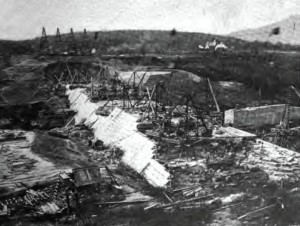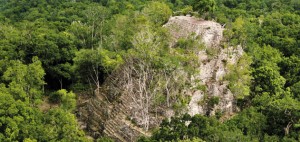Who would have thought that walking around aimlessly for hours in the woods is the easy and quick part of archaeology? All in all, the stereotype that archaeologists spend most of their time in the field excavating and collecting artifacts is completely untrue. Previously I had just accepted this to be fact from readings and lecture concerning the intricacies of archaeological research. However, recently I’ve been able to experience the full brunt of the life of an archaeologist through lab, and it is not an easy one.
Lab work is an imperative part of archaeology, providing for much of the actual results and findings that occur. Rarely is a piece ever just picked up in the field, examined right then and there, then accepted as fact and put away. In lab the artifacts are observed, recorded, sorted, and in some cases put together again from tiny fragments. So, lab work comes with many more subtle complications than field work. In the field the general dangers of spending so much time performing strenuous work in the outdoors are present, and can take an exhausting toll on the body. Similarly, lab work can take a toll on the mind, as classification systems and identification becomes increasingly difficult to do once the artifact has been through a dozen hands, some of which might be mislabeled or broken.
The images that come to mind in thinking of archaeology are mostly that of field work but the meat of the field of anthropology is lab work. The lab work I performed was more than anything rebagging and assorting hastily labeled and disorganized artifacts with a colourful history of tug and pull. They had belonged to private hands, and was to be possibly donated to a museum, but as the bill ranked up for the archaeological work to be done on the artifacts(evidently archaeology is not for the frugal of heart) ownership became complicated up until the point where they are just being borrowed indefinitely for the time being. This contributed to the clutter of the artifacts worked on. Thusly, my initial sentiments toward lab work was that it seemed like some cruel joke, bagging and rebagging bags upon bags of stuff that was sometimes more dirt than artifact, and squinting at a tiny bone for ten minutes to figure out whether it belonged to a bird or an annoyingly small rabbit. Once you get into though, the work itself is incredibly simple. Half the time spent in lab was sifting through a pile of similar centuries old objects and playing One of These Things is Not Like the Other. This becomes the essential component of lab, recognizing when an artifact needs to be classified separately than the material it was grouped with before, and vice versa merging groups of items together for the sake of coherence in sorting. Although archaeology is thought of many times as the dangerous and exciting field work of the likes of Indiana Jones, the work that goes into labeling it all is the vital step that gives an artifact meaning, putting it into context of where it was before and how it played into the lives of the people there years ago.
– Bernardo
Sources:
Ashmore, Wendy and Robert J. Sharer. Discovering Our Past: A Brief Introduction to Archaeology. New York: McGraw- Hill, 2012. Print.




















 This photo illustrates this pretty well. See how the ground on the far side of the wall is lumpier, rockier, and has bigger trees, while the ground closest to the camera is flatter and has fewer rocks and smaller trees? That flatter ground was probably a field.
This photo illustrates this pretty well. See how the ground on the far side of the wall is lumpier, rockier, and has bigger trees, while the ground closest to the camera is flatter and has fewer rocks and smaller trees? That flatter ground was probably a field.
 A tree in a pasture vs. trees in a forest. Note the differences in shape and number of low-lying branches.
A tree in a pasture vs. trees in a forest. Note the differences in shape and number of low-lying branches.

